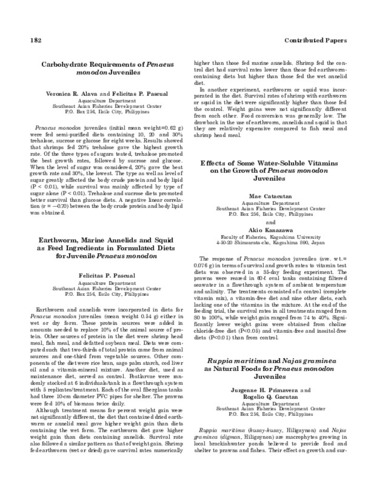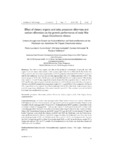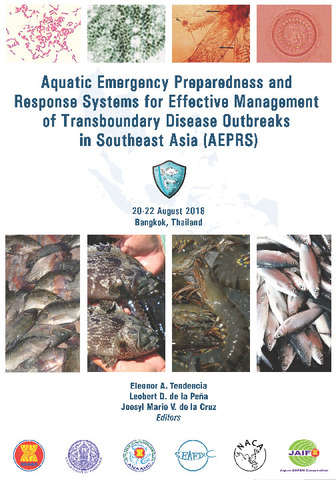Laboratory manipulation of Gracilariopsis bailinae Zhang et Xia (Gracilariales, Rhodophyta)
- Global styles
- MLA
- Vancouver
- Elsevier - Harvard
- APA
- Help
Share
Abstract
Carpospore germination, carposporeling development and tetraspore formation were investigated in Gracilariopsis bailinae Zhang et Xia by manipulating photoperiod, photon flux density, temperature, salinity and nutrients. Laboratory-generated sporelings attained mean growth rate from 4.05 to 10.31% d-1 during the first week of incubation. Duncan s multiple range test (DMRT) showed that growth rates were significantly different (P < 0.05) between the treatment combinations and between weekly intervals. The optimal condition for growth of sporelings, irrespective of culture age, was attained at treatment combinations of 26°C, 11:13 (h. L:D) photoperiod, 100 µEm-2s-1 photon flux density (PFD), 25 µM NH4Cl: 2.5 µM K2HPO4 and 25ppt salinity followed by a treatment combination of 26°C, 11:13 (h. L:D) photoperiod, 100 µEm-2s-1 photon flux density (PFD), 50 µM NH4Cl: 5 µM K2HPO4 and 25 ppt salinity. For the first time in this species, tetraspore formation was induced in the laboratory. The tetrasporophyte produced many tetraspores in almost all branches of the thallus grown at 26°C, 11:13 (h. L:D) photoperiod, 100 µEm-2 s-1, 25 µM NH4Cl: 2.5 µM K2HPO4 and at 30 ppt salinity while those grown at lower light, higher nutrient level and higher salinity had fewer tetraspores. No tetraspores were formed at a higher temperature (30°C), longer photoperiod (13:11 h. L:D), and at 25 ppt salinity and the plants remained vegetative from 4 to 7 months. Logistic regression analysis showed that tetrasporangial induction was significantly affected by nutrients and salinity (P < 0.05).
Suggested Citation
Rabanal, S. F., Azanza, R., & Hurtado-Ponce, A. (1997). Laboratory manipulation of Gracilariopsis bailinae Zhang et Xia (Gracilariales, Rhodophyta). Botanica Marina , 40(1-6), 547-556. https://doi.org/10.1515/botm.1997.40.1-6.547
Type
ArticleISSN
0006-8055Collections
- Journal Articles [1258]
Related items
Showing items related by title, author, creator and subject.
-
Effects of some water-soluble vitamins on the growth of Penaeus monodon juveniles
Catacutan, M.; Kanazawa, A. (Aquaculture Department, Southeast Asian Fisheries Development Center, 1985)The response of Penaeus monodon juveniles (ave. wt.= 0.076 g) in terms of survival and growth rates to vitamin test diets was observed in a 35-day feeding experiment. The prawns were reared in 60-ℓ oval tanks containing ... -
Effect of dietary organic acid salts, potassium diformate and sodium diformate on the growth performance of male Nile tilapia Oreochromis niloticus
Cuvin-Aralar, Maria Lourdes A.; Luckstaedt, Christian; Schroeder, K.; Kühlmann, Kai-Jens (Verlag Natur & Wissenschaft, 2011)The effect of two organic acid salts on the production performance of juvenile male Nile tilapia Oreochromis niloticus were studied in two separate experiments. In the first trial the fish (initial size: 7.84kg) were fed ... -
Aquatic emergency preparedness and response systems for effective management of transboundary disease outbreaks in Southeast Asia: Proceedings of ASEAN Regional Technical Consultation, 20-22 August 2018, Centara Grand Central Ladprao, Bangkok, Thailand
Tendencia, Eleonor A.; de la Peña, Leobert D.; de la Cruz, Joesyl Marie V. (Aquaculture Department, Southeast Asian Fisheries Development Center, 2019)






